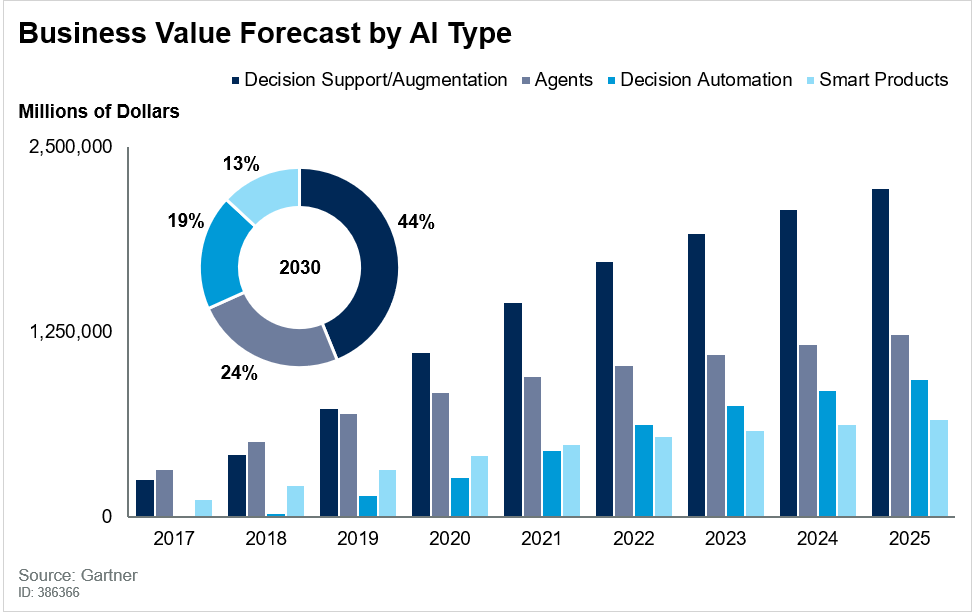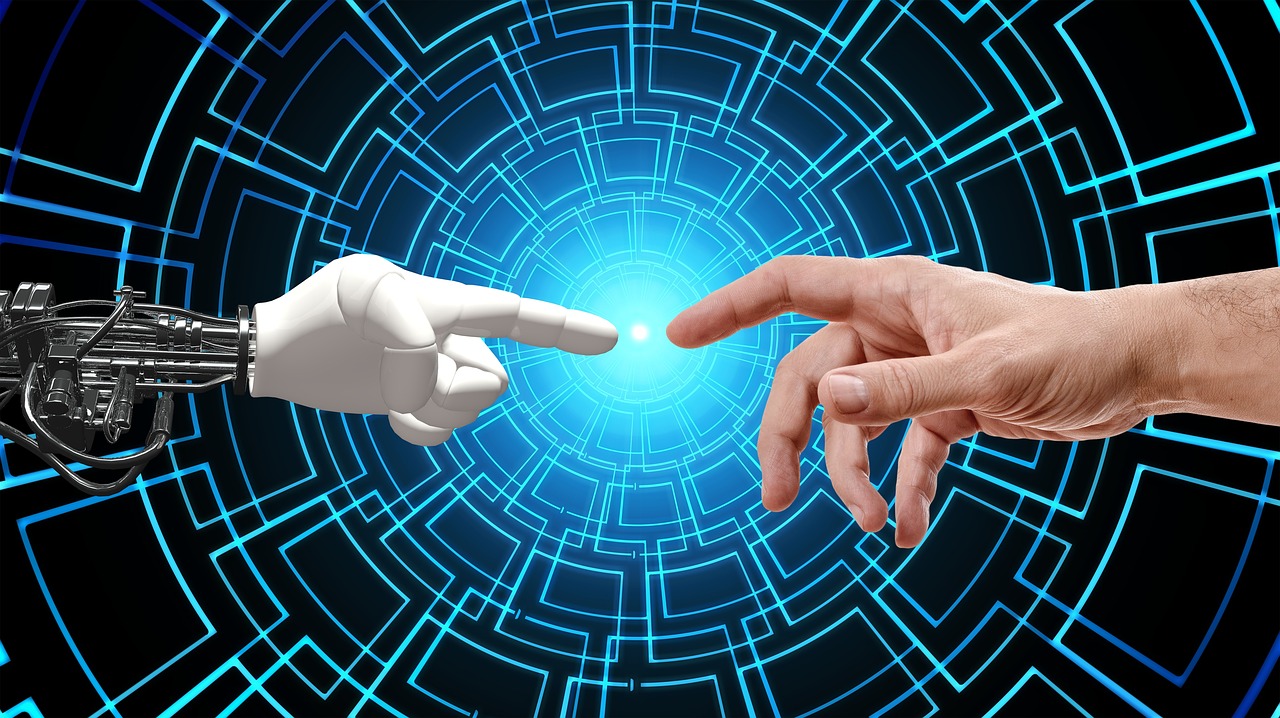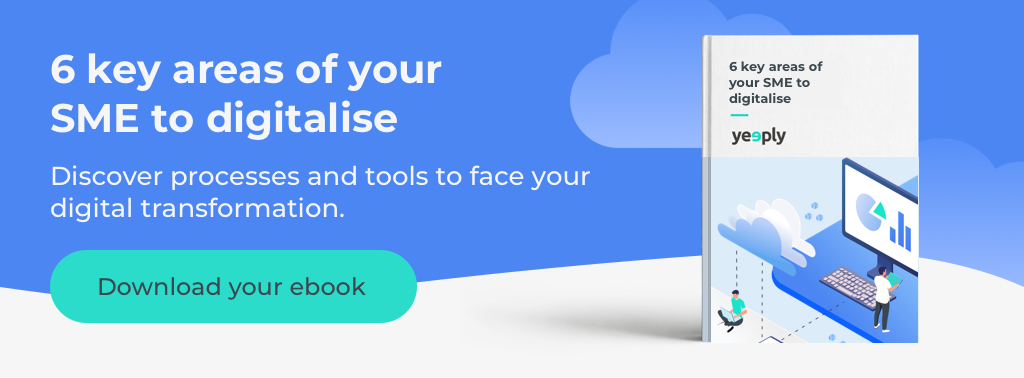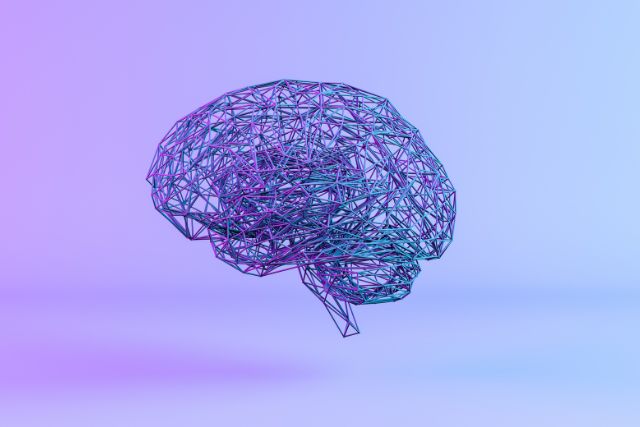For some people, the term Augmented Intelligence may sound like a technology that is still in the distant future. Others fear that the great technological progress will gradually replace human intelligence with machine intelligence. But in reality, this technology is already very present today and brings huge advantages. Let’s take a look at some facts and figures.
According to a study by Gartner—a US market research company—Augmented Intelligence will generate a total of $2.9 trillion in business value worldwide by 2021. Also, the technology will lead to an increase in global productivity of 6.2 billion working hours. By 2030, Augmented Intelligence will account for approximately 44% of global AI-generated business value, surpassing all other AI initiatives.

In this article, we’ll explain what this revolutionary technology is, what the difference between augmented and Artificial Intelligence is, and show you possible sectors for the use of Augmented Intelligence. Let’s jump right in!
Index
- What is Augmented Intelligence?
- The difference between Augmented and Artificial Intelligence
- Possible applications of Augmented Intelligence
- Conclusion
1. What is Augmented Intelligence?
In a nutshell, Augmented Intelligence extends and supports human intelligence with the help of Artificial Intelligence. The technology can analyse large amounts of data in seconds and attempts to find patterns and correlations through Machine Learning. The results of this data analysis ultimately serve humans as a basis to accelerate and simplify the decision-making process for future actions.
Gartner defines Augmented Intelligence as a people-centric partnership model where people and AI work together to enhance cognitive performance. This includes learning, decision making and new experiences.
So, Augmented Intelligence isn’t there to replace human intelligence but to strengthen it. The fundamental goal of linking Artificial Intelligence with human intuition and knowledge is, therefore, to help people work more efficiently and successfully. This is why the technology is also called Intelligence Amplification (IA), cognitive enhancement, decision support or machine-supported intelligence.
Svetlana Sicular, Research Vice President at Gartner, says that “The goal is to make automation more efficient and complement it with human intuition and common sense to manage risk in automating decisions”.
2. The difference between Augmented and Artificial Intelligence
What is the difference between Artificial Intelligence and Augmented Intelligence? Augmented Intelligence is, as the name implies, an extension of Artificial Intelligence. Nevertheless, the two technologies differ quite clearly from each other in one essential point.
You might be interested | The future has never been so close with 3D Hologram and AI
Artificial Intelligence (AI) completely replaces human intelligence and creates machines that work and react exactly like humans—making interaction with humans unnecessary. By using Machine Learning and Deep Learning, machines are thus able to make independent decisions based on accumulated knowledge, thus making humans superfluous.
Have you already noticed the difference in technologies? It’s the degree of human interaction in decision making. Augmented Intelligence is not intended to replace human intelligence, but only to support human thinking and decision making. This means that employees can be relieved in their everyday work, as demanding, time-consuming and repetitive tasks can be performed more efficiently by technology. But very important: the interpretation and decision making is completely left to the human being. Man and machine work hand in hand, so to speak.

3. Possible applications of Augmented Intelligence
Even though Augmented Intelligence is not yet as mature as Artificial Intelligence, it already has a great impact on some sectors. Clearly, there is an advantage for companies that already use such a technology, which is extremely fast to adapt and constantly improving. To give you a better idea of how AI works and the benefits it offers, we will now show you the technology with two practical examples.
Big Data
As we already know, data analysis in AI is the core of the technology. So let’s look a t its use in the big data environment. Many companies have to deal with enormous and complex amounts of data, for example, sales or web traffic, which can hardly be captured by humans.
This is where Augmented Intelligence comes in. It can analyse a large amount of external or internal company data and present it in a comprehensible way; for example in graphical or text-based form. In addition to Artificial Intelligence, Machine Learning, algorithms and computers are used for this purpose. This can then be meaningfully interpreted by humans and derived into actions. In companies, decisions are often made on instinct or based on a limited and much too small amount of data. This is avoided by using Augmented Intelligence and thus the great potential of including Big Data in the company is efficiently used. In addition, the results of the data analysis are accessible to all employees in the company and bundle the company’s expertise.
Recommended article | Design Thinking for strategic decisions in business digital innovation
Healthcare
In another article, we already mentioned the many advantages of using technologies such as augmented and virtual reality in the healthcare sector. The use of Augmented Intelligence is also of great benefit in this sector. The AI-based software solution is used to analyse millions of health data (e.g. symptoms, diseases) of different patients in a very short time and to recognise connections.
This brings a number of vital advantages: based on the correlations found, doctors can quickly identify diseases and their causes. The results of the data analysis also support the doctors in finding suitable therapy methods. As with the use in companies, the probability of medical errors is reduced. At the same time, time-consuming procedures such as billing can be accelerated.
? Keep reading | What is GPT-3 and why is it revolutionising AI?
4. Conclusion
Today’s world is characterised by dynamic and constant advances in technology. Therefore it is essential to be higher, faster and more innovative than the competition. Digitalisation and related technological software solutions such as Augmented Intelligence are essential for the progress of a company. The extension of Artificial Intelligence creates great added value for companies from various sectors, medicine and other areas.
In contrast to Artificial Intelligence, Augmented Intelligence aims to support humans in complex analyses and tasks and thus to increase productivity. The results of data analysis complement human knowledge and leave the interpretation and decision-making entirely up to the human being. This powerful fusion thus results in perfect human-machine collaboration. Explore the potential of today’s technologies and start the digital transformation of your company.













